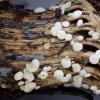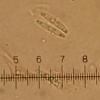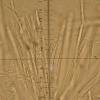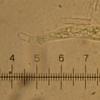
29-12-2025 09:38
Oskari VirtanenHi,could anyone help me identify this, I suspect P

29-12-2025 08:30
Hello.A tiny ascomycete sprouting under Juniperus

28-12-2025 12:08
Margot en Geert VullingsThis possible Karstenia was found on the bark of d

21-12-2025 21:32
Pol DebaenstHello, Garden, Burgweg 19, Veurne, BelgiumOn 10/1

26-12-2025 21:19
Arnold BüschlenPithyella chalaudii Priou. Ist als Bryoparasit in

21-12-2025 09:32
Hello.A tiny ascomycete found embedded in wood in

18-12-2025 21:17
Pol DebaenstThe identification took me to Byssonectria deformi

24-12-2025 17:08
Hulda Caroline HolteHello, I have found this propoloid ascomycete on
Phaeohelotium sp.
Yannick Mourgues,
23-10-2017 00:24
 Found at the base of dead stems of Anethum graveolens (Apiaceae).
Found at the base of dead stems of Anethum graveolens (Apiaceae).Spores 15-17,4x2,2-2,9um Q=5,5-7,1 ends rounded, some guttules inside.
Ascus IKI+, pleurorhynques, spores biserriate
Paraphyses l=2,1-2,9um with a slightly enlarged apex (l=4um).
Any idea ?
Hans-Otto Baral,
23-10-2017 06:28

Re : Phaeohelotium sp.
Hi Yannick
this is a Calycina, possibly C. subherbarum (I do not see the ascus base well). Compare also C. heterospora, which turns red with age, however.
Zotto
this is a Calycina, possibly C. subherbarum (I do not see the ascus base well). Compare also C. heterospora, which turns red with age, however.
Zotto
Yannick Mourgues,
23-10-2017 11:17
Hans-Otto Baral,
23-10-2017 11:47

Re : Phaeohelotium sp.
Yes, clearly with croziers. So I think it is C. subherbarum. Apos are perhaps over 1 mm?
Yannick Mourgues,
23-10-2017 12:40

Re : Phaeohelotium sp.
Thank's again. Apos are 1-2mm wide.
Have you got a reference of a publication for C. subherbarum or is-it a work name ?
Yannick
Have you got a reference of a publication for C. subherbarum or is-it a work name ?
Yannick
Hans-Otto Baral,
23-10-2017 12:51

Re : Phaeohelotium sp.
It is a working name. There is a valid Hymenoscyphus subherbarum which seems a Calycina too but has much smaller spores.
Zotto
Zotto



